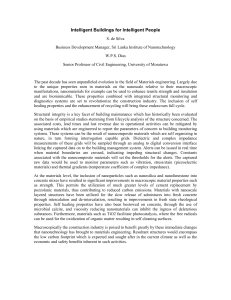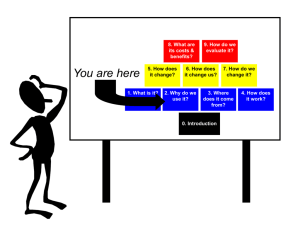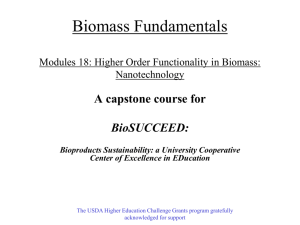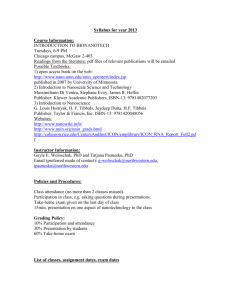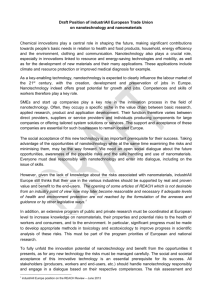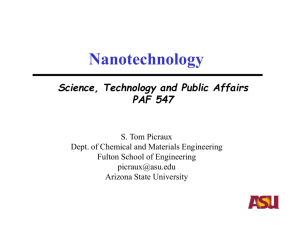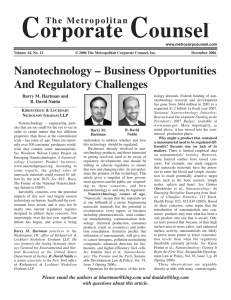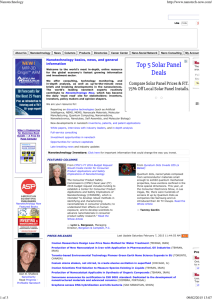Nanotechnology and forest products
advertisement
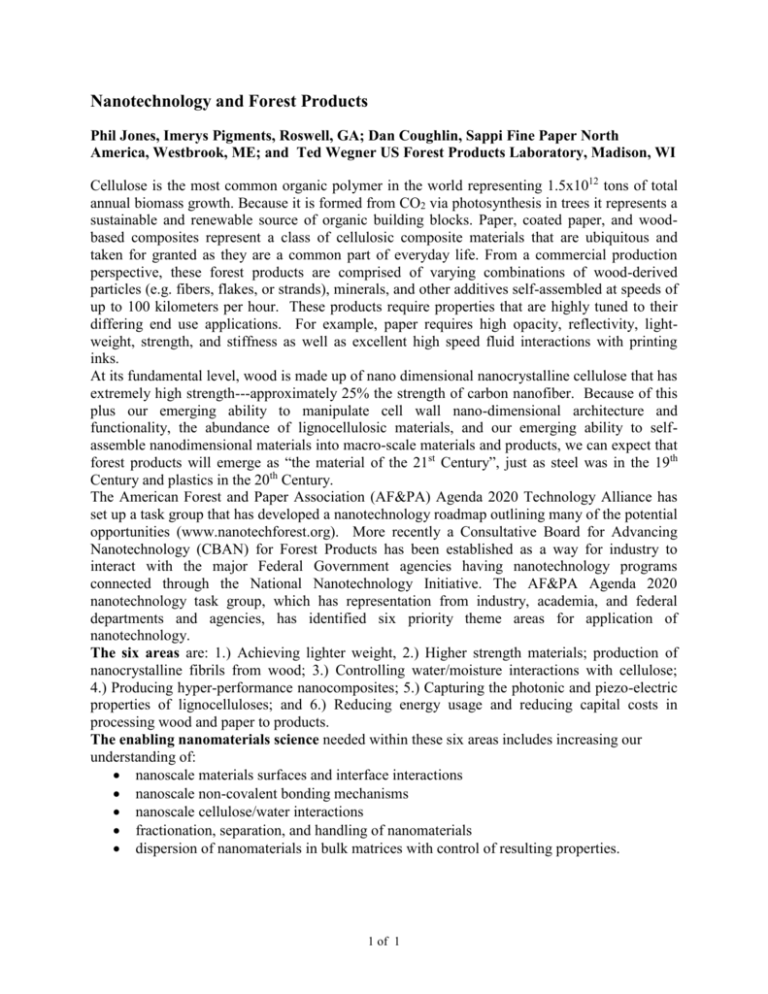
Nanotechnology and Forest Products Phil Jones, Imerys Pigments, Roswell, GA; Dan Coughlin, Sappi Fine Paper North America, Westbrook, ME; and Ted Wegner US Forest Products Laboratory, Madison, WI Cellulose is the most common organic polymer in the world representing 1.5x1012 tons of total annual biomass growth. Because it is formed from CO2 via photosynthesis in trees it represents a sustainable and renewable source of organic building blocks. Paper, coated paper, and woodbased composites represent a class of cellulosic composite materials that are ubiquitous and taken for granted as they are a common part of everyday life. From a commercial production perspective, these forest products are comprised of varying combinations of wood-derived particles (e.g. fibers, flakes, or strands), minerals, and other additives self-assembled at speeds of up to 100 kilometers per hour. These products require properties that are highly tuned to their differing end use applications. For example, paper requires high opacity, reflectivity, lightweight, strength, and stiffness as well as excellent high speed fluid interactions with printing inks. At its fundamental level, wood is made up of nano dimensional nanocrystalline cellulose that has extremely high strength---approximately 25% the strength of carbon nanofiber. Because of this plus our emerging ability to manipulate cell wall nano-dimensional architecture and functionality, the abundance of lignocellulosic materials, and our emerging ability to selfassemble nanodimensional materials into macro-scale materials and products, we can expect that forest products will emerge as “the material of the 21st Century”, just as steel was in the 19th Century and plastics in the 20th Century. The American Forest and Paper Association (AF&PA) Agenda 2020 Technology Alliance has set up a task group that has developed a nanotechnology roadmap outlining many of the potential opportunities (www.nanotechforest.org). More recently a Consultative Board for Advancing Nanotechnology (CBAN) for Forest Products has been established as a way for industry to interact with the major Federal Government agencies having nanotechnology programs connected through the National Nanotechnology Initiative. The AF&PA Agenda 2020 nanotechnology task group, which has representation from industry, academia, and federal departments and agencies, has identified six priority theme areas for application of nanotechnology. The six areas are: 1.) Achieving lighter weight, 2.) Higher strength materials; production of nanocrystalline fibrils from wood; 3.) Controlling water/moisture interactions with cellulose; 4.) Producing hyper-performance nanocomposites; 5.) Capturing the photonic and piezo-electric properties of lignocelluloses; and 6.) Reducing energy usage and reducing capital costs in processing wood and paper to products. The enabling nanomaterials science needed within these six areas includes increasing our understanding of: nanoscale materials surfaces and interface interactions nanoscale non-covalent bonding mechanisms nanoscale cellulose/water interactions fractionation, separation, and handling of nanomaterials dispersion of nanomaterials in bulk matrices with control of resulting properties. 1 of 1

